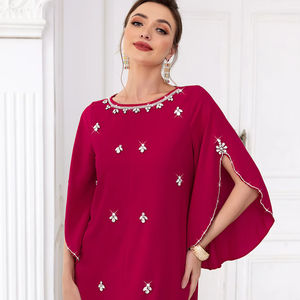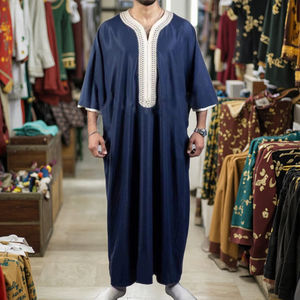- Published on
The Moroccan Caftan Elegance and Tradition
- Authors

- Name
- Adil ABBADI
Introduction
The Moroccan caftan, also known as the kaftan, is an integral part of Moroccan heritage and identity. This traditional garment has been worn for centuries, not only as a symbol of elegance and sophistication but also as a representation of the country's rich cultural heritage.

- Historical Context
- Traditional Significance
- Modern Relevance
- Cultural Preservation
- Conclusion
- Cultural Call-to-Action
Historical Context
The origins of the Moroccan caftan date back to the 16th century, during the reign of the Saadi dynasty. It was initially worn by the elite class, including royalty and nobility, as a symbol of their status and wealth. The caftan was made from luxurious fabrics such as silk, velvet, and brocade, and adorned with intricate embroidery and patterns.
Traditional Significance
In Moroccan culture, the caftan is not only a piece of clothing but also a symbol of tradition and heritage. It is worn on special events such as weddings, Eid celebrations, and other formal occasions. The caftan is also worn by both men and women, although the designs and fabrics used may differ. For men, the caftan is a symbol of dignity and respect, while for women, it is a symbol of beauty and elegance.

Modern Relevance
In modern times, the Moroccan caftan has experienced a resurgence in popularity, not only in Morocco but also globally. The caftan has been reinterpreted and adapted to fit modern tastes and styles, incorporating new fabrics, colors, and patterns. Many Moroccan designers have also incorporated modern twists, such as adding pockets or blending traditional fabrics with modern materials.
Cultural Preservation
Efforts have been made to preserve and protect the traditional Moroccan caftan, including the establishment of cultural institutions and organizations dedicated to promoting and preserving Moroccan cultural heritage. The Moroccan government has also launched initiatives to support local artisans and craftsmen, ensuring the continuation of traditional craftsmanship and skills.
Conclusion
The Moroccan caftan is a timeless symbol of elegance and tradition, worn by both men and women to showcase their cultural heritage and sophistication. From its historical origins to its modern relevance, the caftan continues to play an important role in Moroccan culture and identity.
Cultural Call-to-Action
We encourage readers to explore and appreciate the rich cultural heritage, including the Moroccan caftan. By supporting local artisans and craftsmen, and promoting cultural exchange, we can help preserve and protect this valuable cultural treasure for generations to come.
